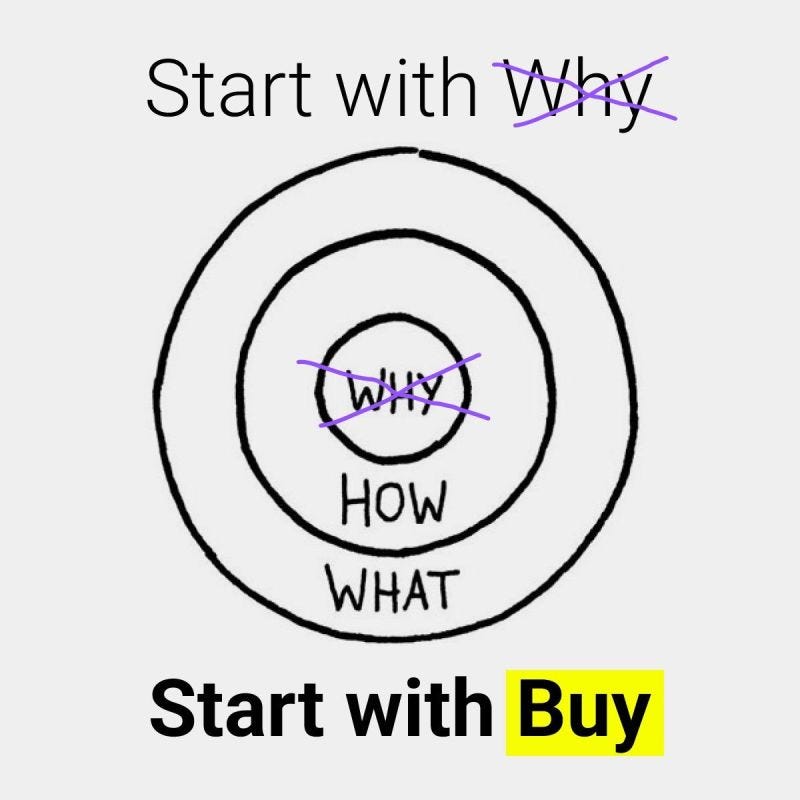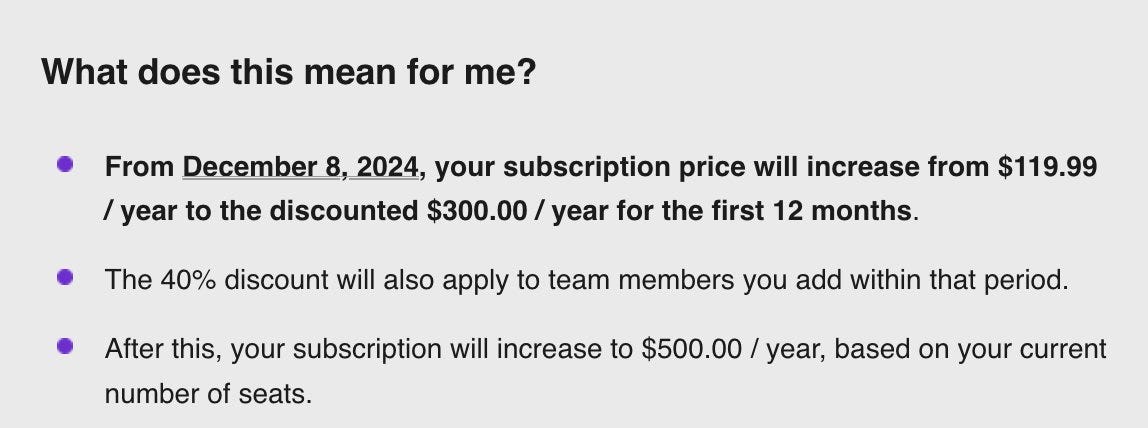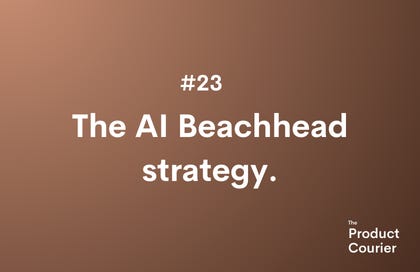The AI beachhead strategy.
Product market fit, Canva's price increase and how to prioritise the right segments.
Thank you for reading The Product Courier. We’re 1.425, which is 189 more than 30 days ago! 📈
If you're new here, welcome! We're Lucas and Toni, both Product freelancers for early-stage startups. Lucas specializes in Product Marketing and Toni in Product Management.
In The Product Courier, we share actionable tips to help you deliver better work faster and accelerate your career.
In this 23rd edition of The Product Courier, we talk about product-market fit, pricing increases, and AI beachhead strategy.
Brain food. 🧠
Start with buy.

I've been reflecting a lot about product-market fit (PMF) recently.
We build products, create businesses, and start writing newsletters because we want to solve problems. That's the essence of entrepreneurship. I believe that's also why many choose a product career over another path.
Finding the right problem to solve and the right way to solve it – that's really hard. It's the main reason why startups fail, despite the extensive literature and methodology available on this topic.
But what if what we've been taught in business school was wrong?
What if there was actually a better way to assess and iterate on PMF?
We all get excited when we demo our product and hear:
"Oh man, this is exactly what I need!"
"When can I get my hands on it?"
The truth is that only a fraction of these people will actually buy it.
And if people don't buy your product, well, you don't have a market fit.
It's so easy to get flooded by positive feedback or vanity metrics and think that our products are going to crush sales.
In the end, what matters is the money that actually lands in your bank account.
This means that the best way to assess willingness to pay is people actually paying.
Selling is the only risk-free way to assess Product-Market Fit.
Start with buy.
Highly recommend reading and to go further on these topics.
The news of the week. 📰
Canva announces a 300% price increase (and why it’s a good strategy revenue-wise)

Netflix, Spotify, AWS... Price increases are rarely popular, whether it's in B2B or B2C. Still, some are more aggressive than others, and some are more accepted by users as well.
A few days ago, Canva announced to its users a 300% increase in their Canva team plans. For U.S. customers, the yearly cost for a five-user team will jump from $120 to $500 (ouch). This decision, due to the "release of AI features" within the product, raises questions about the positioning of the company in the near future.
Canva has created its user base with a user-friendly and accessible design tool – with such a price increase, many companies might cancel their subscriptions and switch back to Adobe. Or... not.
The pricing sweet spot is when users are complaining – but still paying. I've personally had to manage significant price increases in the past, and I've always been surprised by how low the churn rate was.
No doubt this will considerably boost Canva's revenue – the math is quite simple here.
I've asked Claude 3.5 to calculate different churn scenarios based on the price increase.
Current Revenue = retained users * 120$.
New revenue = retained users * 500$
Based on these scenarios, Canva would start to lose revenue if they lost 76% of their team plan customer base, which is extremely unlikely.
This analysis is obviously very simplified and doesn't take into account the impact on customer acquisition and many other factors. My point is that we underestimate users' ability to simply accept price increases – even if they don't like them.
Canva considerably accelerates the production time of design assets – most users would rather pay more instead of switching back to a time-consuming solution. Price increases are a gamble – I’m curious to see how this one will pay off.
Community Polls. 📊
Your weekly tutorial.
The AI Beachhead strategy. 🪖
Nailing Product-Market Fit is probably one of the biggest challenges for founders.
To assess and iterate on Product-Market Fit, you need to identify the product hypothesis, talk to customers, and see what they want and what they are ready to pay for.
That's great, but…
Who should you talk to first?
The best way to screw up this process is to test too many product hypotheses on too many different segments. It's like fighting dozens of battles at the same time – your chances of defeat increase because of a lack of focus.
Speaking of fighting – that's where the beachhead strategy comes into play.

The term, which comes from US Army tactics during WWII (focusing on winning beaches by taking them one by one), is about focusing on 3-5 segments to maximize the chance of winning. It's a really efficient strategy as it gives you the opportunity to:
Get a competitive edge with a dedicated positioning. (Ex: "The Customer Feedback analytics for B2B early-stage start-ups ")
Test your hypotheses more efficiently and accurately.
Focus your feature development on core features.
Great, right?
But wait… how can I choose which segment to focus on?
That's where AI can help you.
I've created this prompt to help me identify potential segments and bring more clarity.
⚠️ Disclaimer: ⚠️
If you've been reading us for a while, you already know that we have a very strong position on AI usage. It's a fantastic technology, as long as you don't use it to do the work for you. Use it as a personal assistant to iterate faster, not to design your entire beachhead strategy.
We recommend to use use AI to: ✅
Brainstorm on potential segments
Identify alternative segmentation methods
Draft a framework you can iterate on
Fine-tune your value proposition
Don't: ❌
Believe everything AI is saying (it might hallucinate or completely make things up)
Build anything without talking to actual customers
Here's the prompt I use. 👇





